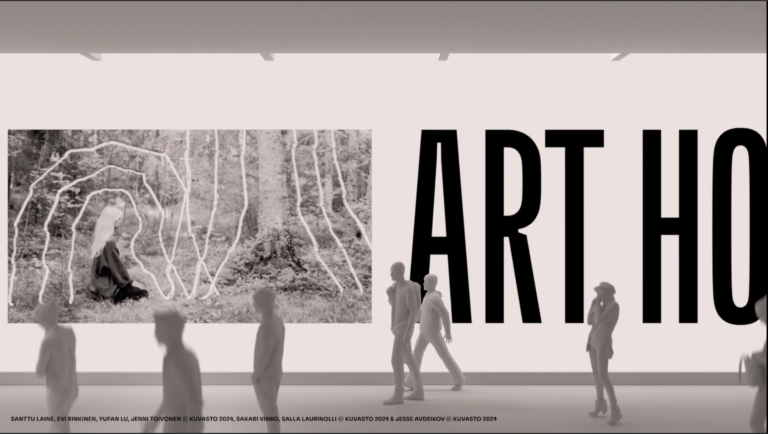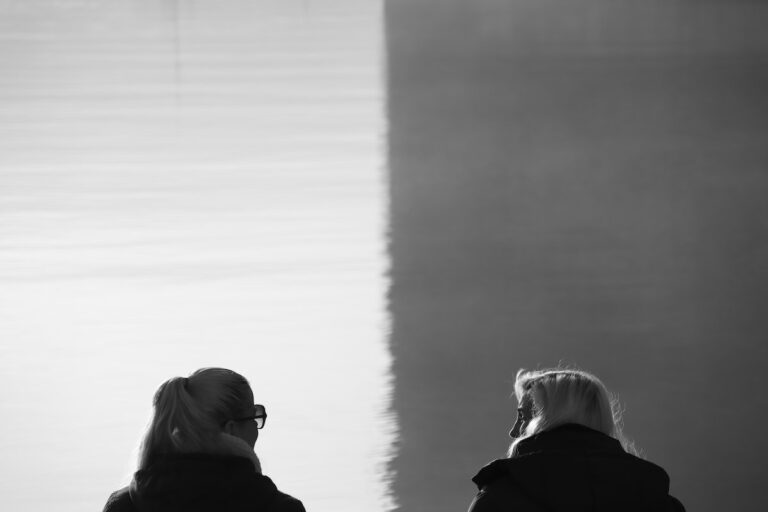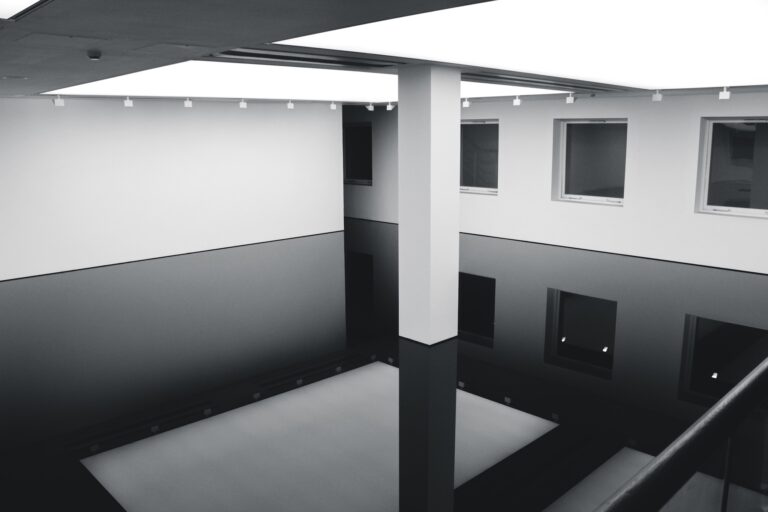More than a shared space
The Visual Art House is a visual arts hub and collaborative concept that aims to create structures that will renew the visual arts sector and develop services for audiences, artists and visual arts organisations.
The Visual Art House was born out of a need for systemic change in the visual arts. This is done through closer cooperation between the actors in the sector and by improving the working conditions of visual artists. The project is also unique internationally, as the House consists of artist-led communities that provide opportunities and support services for artists, and create an environment that respects authorship, copyright and freedom of expression.

The 19 associations involved in the project maintain 16 permanent exhibition spaces in Helsinki and organise more than 350 exhibitions and other visual arts events every year. The events organised by the communities to present and communicate art reach hundreds of thousands of art lovers every year. The Visual Art House enables significant synergies between the actors, benefiting both the artists and the visual arts audience. The House’s operating model is based on a strong collegiality, which means partnership between the participating communities, common objectives and knowledge sharing.
For the public, this offers a wide range of art and artists in one place. The Visual Art House will be a living room for diverse art, diverse activities and a diverse artistic community. The exhibition concept will build on the existing diverse events and gallery activities of the operators. It will offer visitors a polyphonic, living programme package that keeps up with the times. In the free-of-charge Kuvataidetalo, the public can enjoy not only the art, but also the other multifunctional spaces in the building dedicated to lounge and work; a café, an art shop and meeting and working spaces.
The Visual Art House will serve online audiences of the visual arts before the physical house is completed. The Digital Visual Art House will bring together on a single platform the exhibitions and events of its member organisations and, in the future, art exhibitions and sales. The Digital House of Fine Arts and the physical House of Fine Arts will complement each other. Read more about the Digital Visual Art House here.

Art and the artist at the core of the Visual Art House
Art is at the core of what makes the Visual Art House tick: art is reflected in the decisions and the design throughout the project. The house allows for a wide range of ways of presenting and experiencing art. Its aim is to increase the appreciation and relevance of the visual arts, to develop models for funding and earning from the visual arts, and to create new ways of selling and acquiring art. The visual arts and artistry drive the branding, service development and decision-making of the Visual Art House. In 2023, a clear concept and a new brand image were created for the Visual Art House. Poem.company’s strategic concept work is to ensure that all the development work of the House remains coherent and that art remains at the centre of the work. The branding that follows the concept will consider the functionality of the visual identity in both the physical and digital environment. The striking black and white visual identity created by N2 Albiino naturally leaves room for what matters most: art.
The premises of the Visual Art House
The motivation behind the Visual Art House is to create a new model for presenting and experiencing art. The Visual Art House is a new, attractive and open space where visual artists and audiences meet. It is an art hub that is not comparable to a museum or gallery. Art in its various forms is present everywhere, right down to the building’s façade.

The space requirement for the Visual Art House is very ambitious. Already the specific technical characteristics are required for large-scale exhibition premises, but the wishes of member organisations have also been taken into account as well as the plan to have a restaurant and a shop in the building. More than 90 space and location options have been identified between 2021 and 2023. The challenge has been to find space large and adaptable enough to accommodate not only exhibitions and events, but also public services and the nearly 100 employees of the member communities. In addition to the requirement of sufficient affordability, the aim is that the Visual Art House should be accessible and barrier-free, both for its target groups and for the Visual Art House staff. There have been various negotiations with both public and private operators, and in addition to Helsinki, the space mapping has been extended to Espoo and Vantaa. For Helsinki, the mapping has focused mainly on the central area. Excellent public transport connections and other nearby services and operators are important for the location. Once premises have been found, a renovation plan will be drawn up to accommodate the wide range of activities. As part of the space plan and the design of the public areas, service concepts for the building will be developed. The design will also take into consideration the multidisciplinary expertise of the member organisations.
The next steps in the development of the Visual Art House
The Visual Art House’s first operations have been developing multi-organisational co-operation and a variety of services for artists. An example of this is the peer-mentoring programme for visual artists: a service that member organisations jointly produce for their members with the support of the Visual Art House. Another example is master class training, which is co-created by member organisations and the Visual Art House in cooperation with universities in the field. The ambitious Visual Art House project also still has us waiting: moving into the actual building is still a few years away. At the moment, the moving towards the wider co-operation is slowed down by lack of resources. Government cuts to cultural funding have further stretched the resources of member organisations, and this has had a strong impact on the co-operation. The Visual Art House aims to create synergies and reduce duplication, but secondly, it is still in a stressful transition phase.
The first version of the Digital Visual Art House has been published. In addition to the published functionality, the Digital House now has pre-built digital exhibition and art trading capabilities. The deployment of these functionalities and the planning of activities will be possible in the future by investing in interoperability and co-organisation. If successful, the collaboration around the Digital House will solve many of the challenges faced by member organisations in running their own online services.
In terms of premises, the selection has been narrowed down to the two most potential sites. Both sites have an existing building on the premises. It will take several years to secure the business model and financing for the building, as well as to reach a contract, vacate the building and renovate the premises, so the physical Visual Art House will keep us waiting a bit longer.